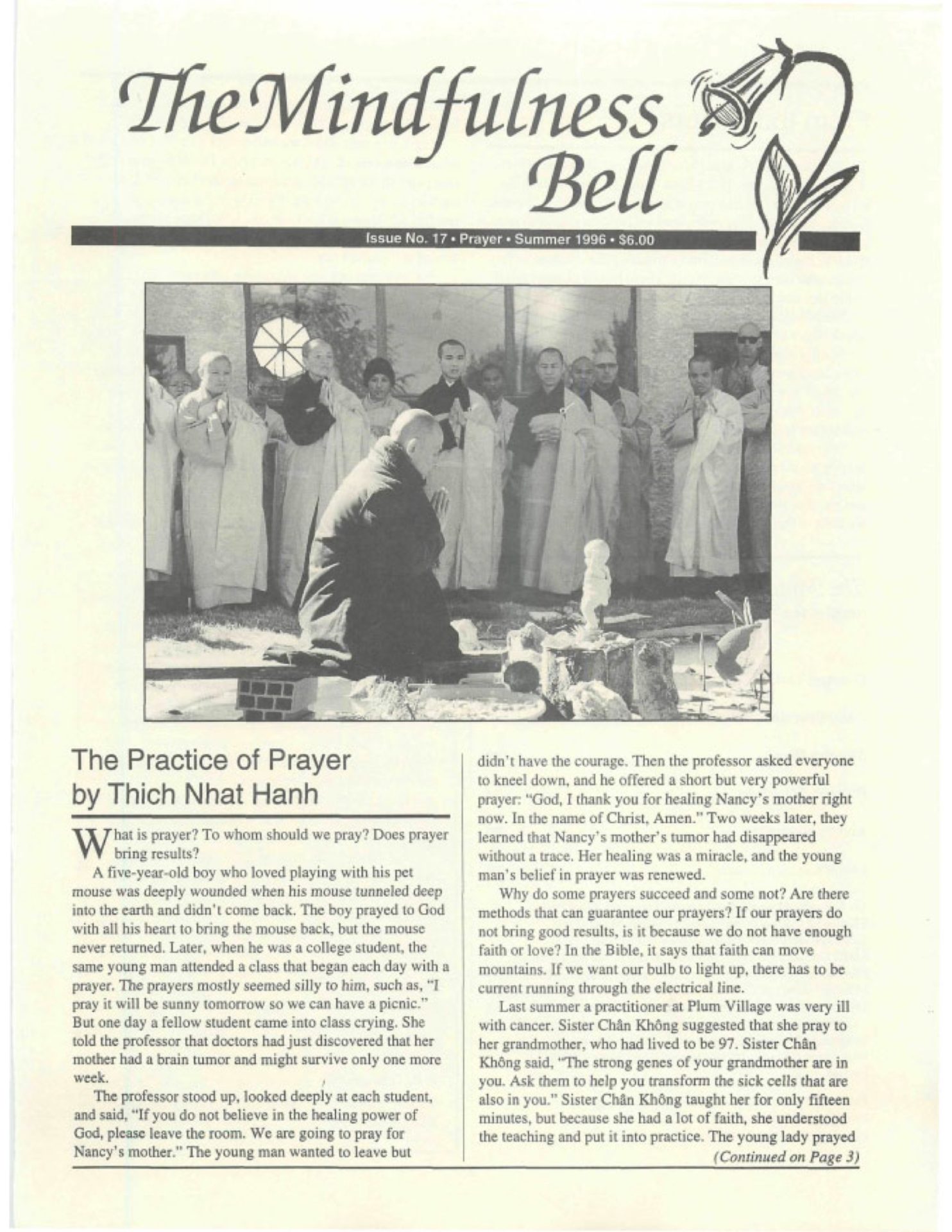By Susan Murphy
Since 1982, I have been practicing Buddhist meditation and Christian contemplative prayer. Both have been very meaningful in my own spiritual formation, and I have come to recognize both traditions as my spiritual roots. This integration has deepened so that they have truly become one fabric, one tapestry. For me, contemplative prayer is an awareness of spacious presence. Many of the meditation practices in The Miracle of Mindfulness have counterparts in Christian prayer. For example, “phrase and breath”
By Susan Murphy
Since 1982, I have been practicing Buddhist meditation and Christian contemplative prayer. Both have been very meaningful in my own spiritual formation, and I have come to recognize both traditions as my spiritual roots. This integration has deepened so that they have truly become one fabric, one tapestry. For me, contemplative prayer is an awareness of spacious presence. Many of the meditation practices in The Miracle of Mindfulness have counterparts in Christian prayer. For example, "phrase and breath" can be done as "centering prayer," in which a word is given in receptive silent prayer and then is repeated silently with the breath. The mindfulness practice on those who are suffering is similar to intercessory prayer, in which we open our hearts in compassion to others and offer ourselves to be available to relieve their suffering. During times when my mind is going too quickly or is insistently preoccupied, I find counting the breath to be very helpful.
As a Quaker, I have been inspired by the similarities between Quaker and Buddhist practice, especially the Quaker queries and the Buddhist precepts. In addition to individual contemplative prayer and "practicing the presence" in daily life, Quakers also come together as a community, sitting in silence, during which we are receptive to the "presence in the midst." If someone is moved to do so, they may stand and speak. If not, we simply sit in prayerful receptiveness, listening to what is given in the spirit. This experience of collective contemplative prayerfulness is at the heart of Quaker faith and practice and is the foundation for community discernment. It provides guidance for taking compassionate action in the world. Thay often speaks of the peace, joy, stability, and compassion which are natural outcomes of our meditation practice. Quakers also recognize that sitting in the divine presence results in the "fruits of the spirit": love, joy, peace, patience, and gentleness.
It is not cultural context or external form that brings us to the deep center, to that place of peace, joy, compassion, wisdom, and discernment, but rather a very intimate attention to the most simple presence.
Susan Murphy, True Good Birth, is a member of the Palo Alto Friends' Meeting and facilitates the Friends' Mindfulness Sangha.

